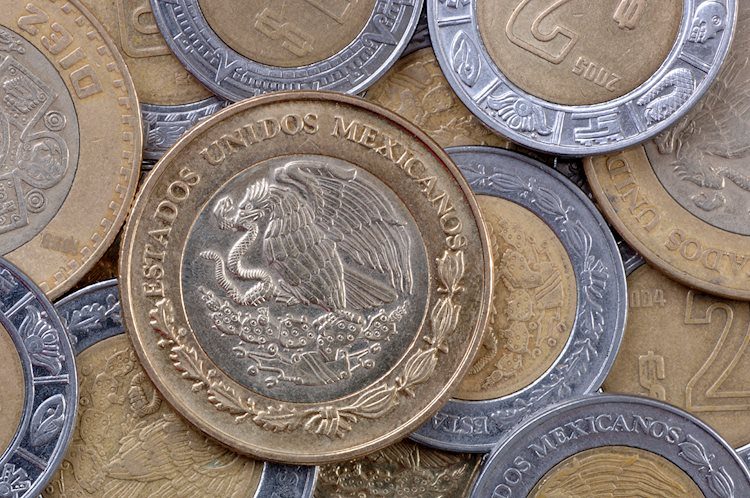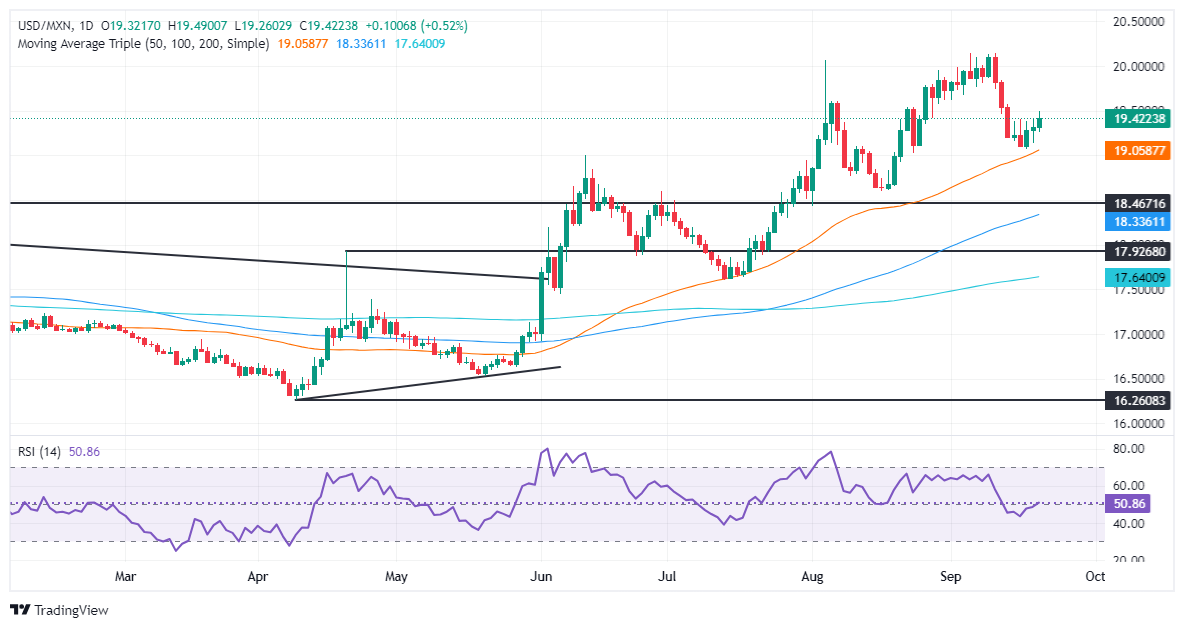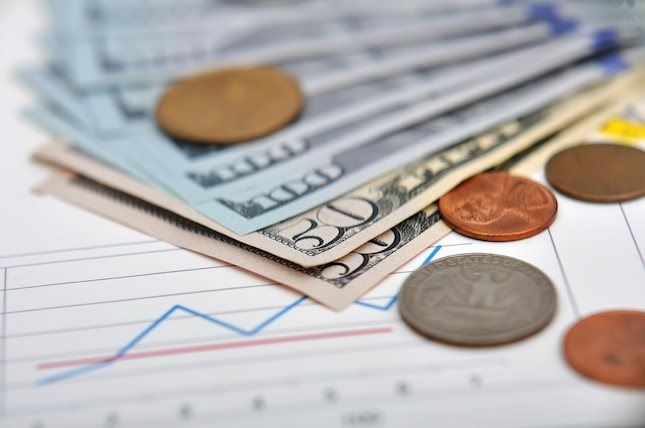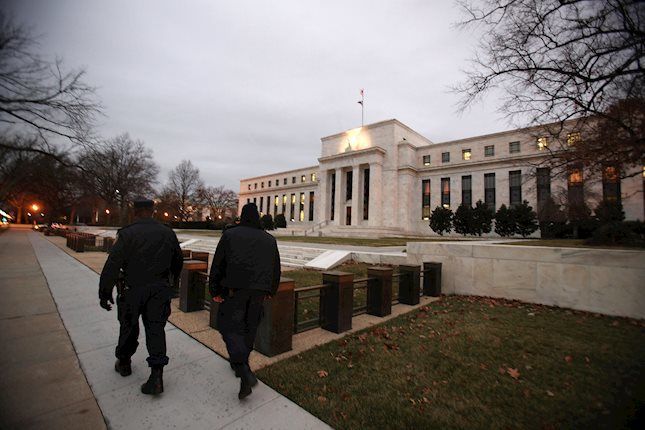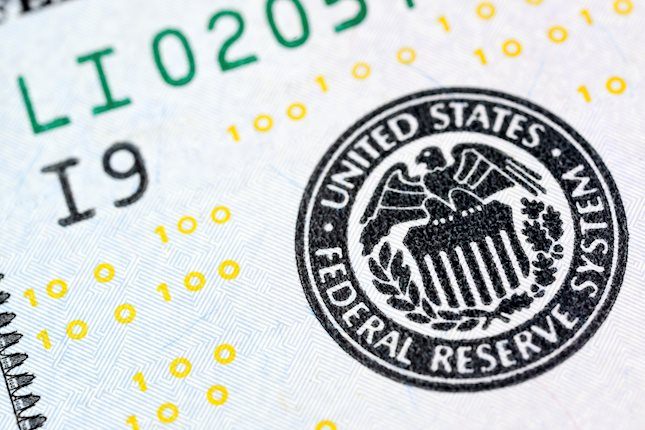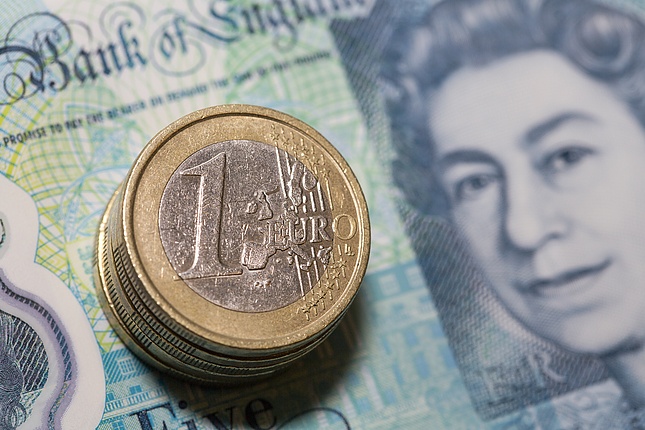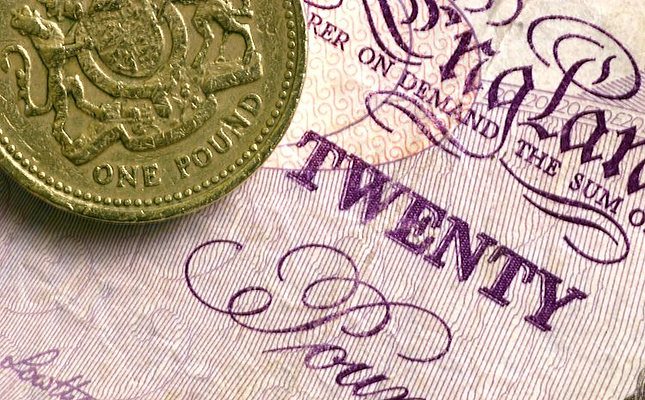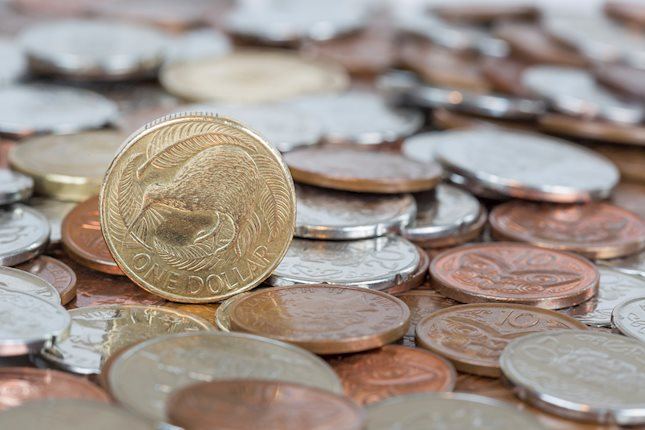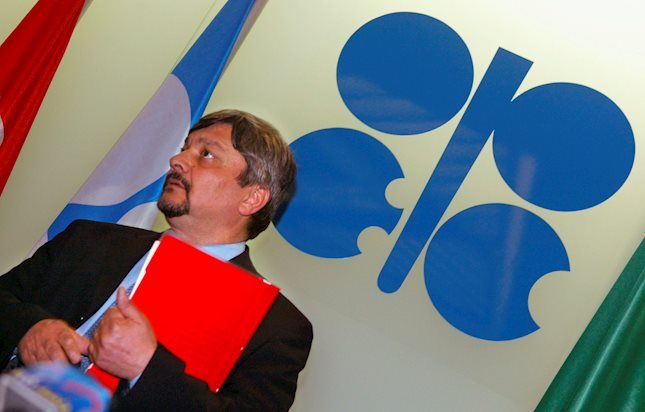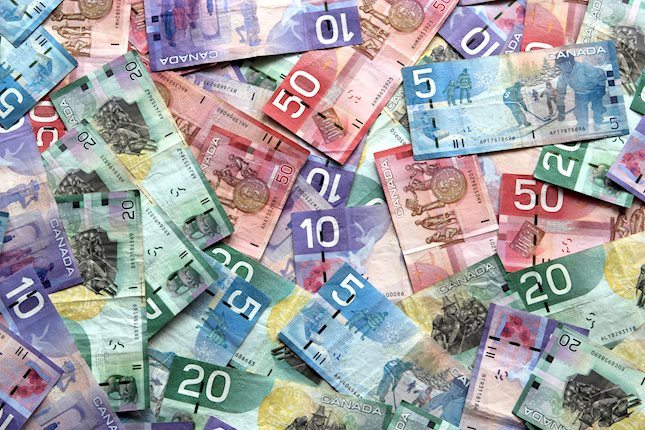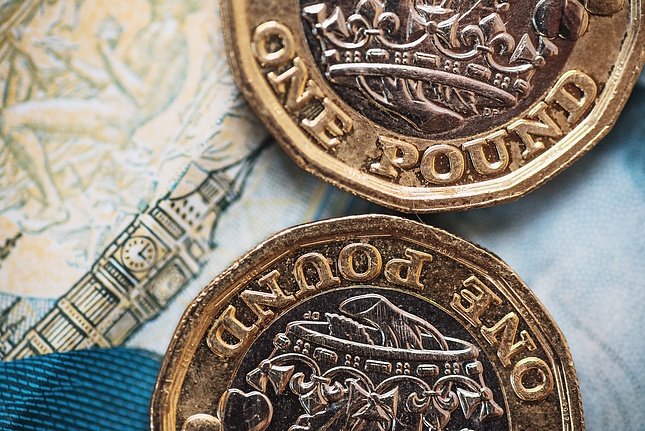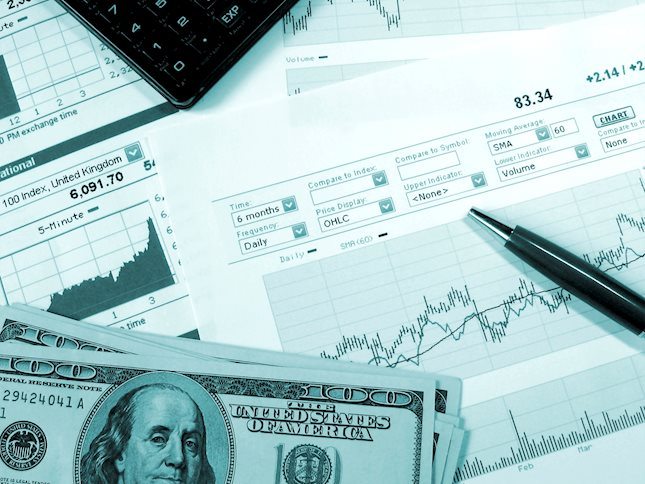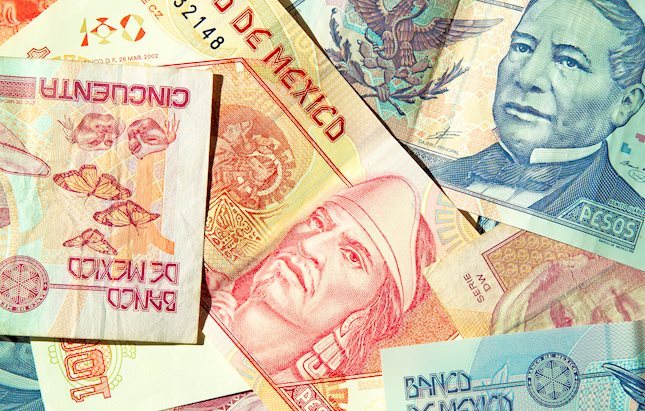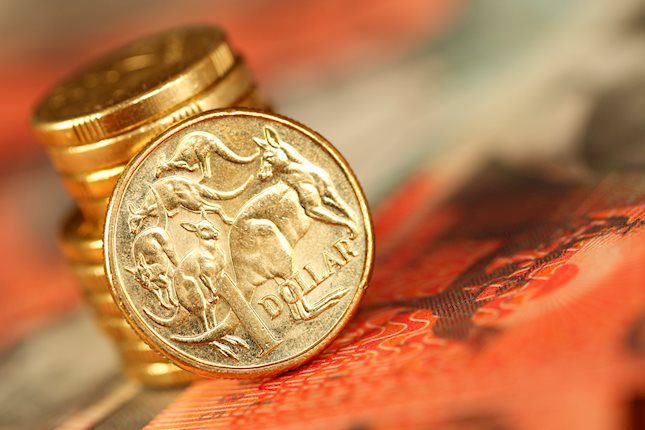Mexican Peso's agony continues on dampened risk appetite, strong US Dollar
- Mexican Peso continues to weaken, recording losses for three consecutive days amid increasing risk aversion.
- Fed Governor Waller supports the recent 50 bps rate cut, pointing to easing inflation and hinting at further cuts if labor conditions deteriorate.
- Banxico anticipated to lower rates by 25 bps next week, potentially sustaining an appealing interest rate differential to support the Peso.
The Mexican Peso extended its losing streak against the Greenback to three consecutive days, with the currency set to sustain weekly losses. Risk aversion hurts the Peso's prospects, which hasn’t been able to capitalize on the Federal Reserve’s (Fed) decision to lower rates for the first time in four years. This exerts pressure on the US Dollar, but the USD/MXN remains firm and trades at 19.38, printing gains of over 0.42%.
Wall Street reversed course on Friday as traders digested the decisions of three major central banks, particularly the Fed. Fed Governor Christopher Waller said on CNBC that cutting 50 basis points was right, justifying its decision based on estimates that the August Personal Consumption Expenditures Price Index (PCE) will be very low.
Waller added that inflation is softening faster than he thought and is concerned about that. He stated that they could do more if the labor market worsens and if the inflation data softens quickly.
South of the border, Mexico’s economic docket is scarce, and traders are eyeing next week with the release of Economic Activity, Retail Sales, inflation data, and the Bank of Mexico (Banxico) monetary policy decision.
Regarding the political turmoil, the week has been calm since the signing into law of the judicial reform.
Meanwhile, traders are eyeing Banxico’s decision. Most analysts estimate a rate cut of at least 25 basis points from 10.75% to 10.50%, which would reduce the interest rate differential slightly. It should, however, will remain attractive to investors and boost the Mexican currency.
Daily digest market movers: Mexican Peso falls, awaiting next week’s data
- According to different banks and rating agencies, the impact of overhauling the judicial system remains far from being felt. The lack of a state of law and transparency could be factors in adjusting Mexico’s creditworthiness over the longer term.
- On Wednesday, the Fed cut rates by 50 bps, justifying its decision on the progress on inflation, which is sustainably moving toward its 2% goal. The US central bank focus shifted onto the labor market.
- The Fed expects inflation to condense to 2.6% in 2024, 2.2% in 2025, and 2% by 2026, according to the Core Personal Consumption Expenditures Price Index.
- Fed officials estimate the US economy will grow at a 2% pace in 2024, with the Unemployment Rate rising to 4.4% by the end of the year.
- December 2024 fed funds rate futures contracting suggests that the Fed might lower rates by at least 53 basis points, implying that in the following two meetings, the market expects two 25 bps rate cuts left in 2024.
USD/MXN technical outlook: Mexican Peso tumbles as USD/MXN rallies above 19.35
From a technical standpoint, the USD/MXN is upwardly biased despite retreating from around 20.00 toward the September 18 swing low of 19.06. Next week, Banxico is expected to lower rates, which could push the exchange rate out of the 19.00-19.50 range.
Momentum shifted bullishly as the Relative Strength Index (RSI) crossed above its neutral line, while aiming upward.
If the USD/MXN climbs above 19.50, the next resistance would be the 20.00 psychological level. Further upside emerges at the yearly peak at 20.22, followed by the 20.50 mark.
Conversely, if the USD/MXN drops below the September 18 low of 19.06, the psychological 19.00 figure will be exposed. Further losses lie underneath, with buyers' next line of defense being the 50-day Simple Moving Average (SMA) at 18.99, followed by the last cycle low of 18.59, the August 19 daily low.
Fed FAQs
Monetary policy in the US is shaped by the Federal Reserve (Fed). The Fed has two mandates: to achieve price stability and foster full employment. Its primary tool to achieve these goals is by adjusting interest rates. When prices are rising too quickly and inflation is above the Fed’s 2% target, it raises interest rates, increasing borrowing costs throughout the economy. This results in a stronger US Dollar (USD) as it makes the US a more attractive place for international investors to park their money. When inflation falls below 2% or the Unemployment Rate is too high, the Fed may lower interest rates to encourage borrowing, which weighs on the Greenback.
The Federal Reserve (Fed) holds eight policy meetings a year, where the Federal Open Market Committee (FOMC) assesses economic conditions and makes monetary policy decisions. The FOMC is attended by twelve Fed officials – the seven members of the Board of Governors, the president of the Federal Reserve Bank of New York, and four of the remaining eleven regional Reserve Bank presidents, who serve one-year terms on a rotating basis.
In extreme situations, the Federal Reserve may resort to a policy named Quantitative Easing (QE). QE is the process by which the Fed substantially increases the flow of credit in a stuck financial system. It is a non-standard policy measure used during crises or when inflation is extremely low. It was the Fed’s weapon of choice during the Great Financial Crisis in 2008. It involves the Fed printing more Dollars and using them to buy high grade bonds from financial institutions. QE usually weakens the US Dollar.
Quantitative tightening (QT) is the reverse process of QE, whereby the Federal Reserve stops buying bonds from financial institutions and does not reinvest the principal from the bonds it holds maturing, to purchase new bonds. It is usually positive for the value of the US Dollar.
Forex News
Keep up with the financial markets, know what's happening and what is affecting the markets with our latest market updates. Analyze market movers, trends and build your trading strategies accordingly.
